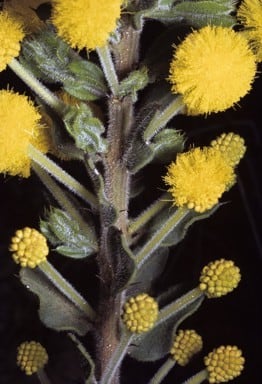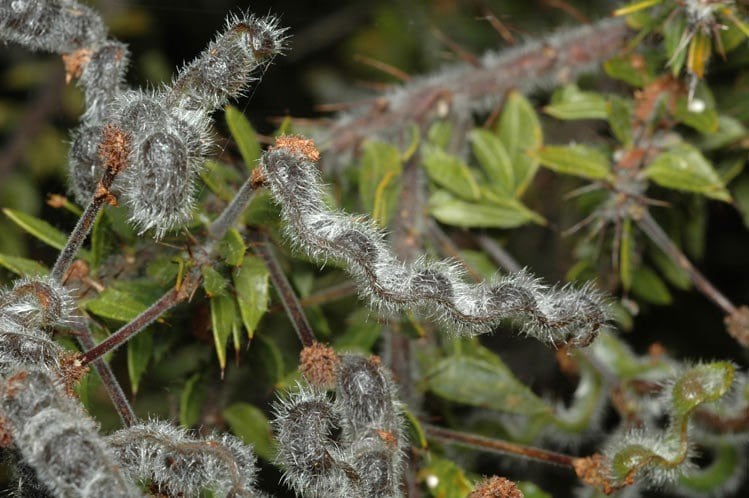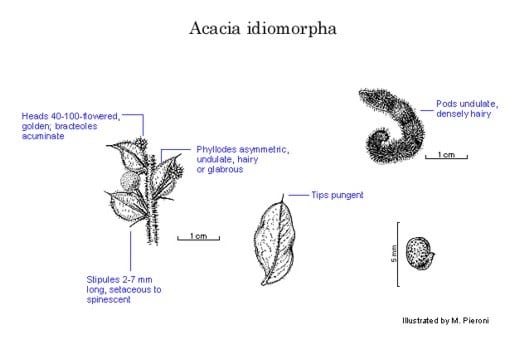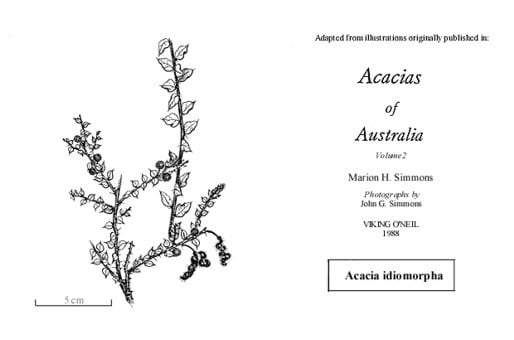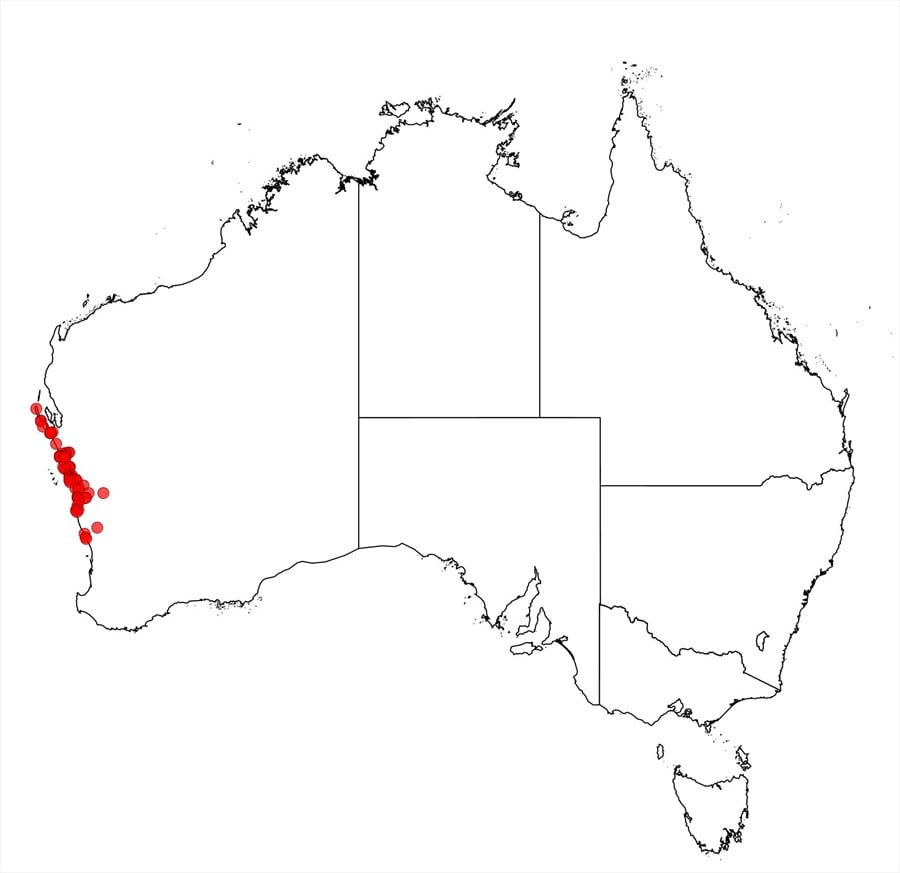Acacia idiomorpha A.Cunn. ex Benth.
WATTLE
Acacias of Australia
Family
Fabaceae
Distribution
Found in coastal and near coastal areas from Ledge Point N to Tamala Stn and Dirk Hartog Is., Shark Bay in southern W.A.
Description
Spreading sprawling shrub 0.2–1 m high. Branchlets pilose, ±hirsute, pubescent or glabrous, with hairs rarely crisped. Stipules 2–7 mm long, setaceous, spinescent or only indurate bases subspiny, straight or recurved. Phyllodes asymmetrically ovate to narrowly ovate, elliptic to narrowly elliptic or narrowly oblong-elliptic, 5–25 mm long, 3–14 mm wide, undulate, pungent by a slender cusp, with indumentum as on branchlets, usually 1-nerved; lateral nerves obscure. Inflorescences simple, 1 or 2 per axil; peduncles 5–25 mm long, hirtellous to puberulous or glabrous; heads globular to slightly obloid, 5–8 mm diam., 40–100-flowered, golden; bracteoles normally narrow and long-acuminate. Flowers 5-merous; sepals variably united for 1/4–2/3 their length, with lobes linear to triangular; petals 1-nerved. Pods narrowly oblong, often curved, to 6 cm long, 4–6 mm wide, undulate, densely pilose to villous. Seeds longitudinal to oblique, oblong to widely ovate or elliptic, 3 mm long, light grey or brown, often mottled; aril subterminal.
Habitat
Grows in sand or loam, often over sandstone or limestone, on coastal cliffs and dunes, along rivers near coast, sometimes in mallee groves or shrubland.
Specimens
W.A.: between Geraldton and Nanson, A.M.Ashby 4517 (PERTH); Tamala Stn, Shark Bay area, B.R.Maslin 3692 (MEL, PERTH); ‘District Victoria in collibus calcareis prope mare’, E.Pritzel 432 (BM, K, MO, NSW, P, PERTH); Green Head, C.A.Gardner 13939 (glabrous variant) (PERTH).
Notes
Extremely variable, especially in indumentum and in dimensions of phyllodes, stipules, peduncles and flower-heads; although there appears to be little correlation in the variation, future studies may reveal the need to recognise infraspecific taxa. The type, as well as part of A.S.George 11562 (CANB, K, PERTH) also from Dirk Hartog Is., has an unusual combination of characters: the pubescence on the phyllodes and branchlets is strongly curved, the stipules short, rigid, spiny and strongly recurved and the phyllodes with two longitudinal nerves arising from the base. Plants in coastal habitats often have larger phyllodes and longer peduncles than elsewhere. Some specimens from Kalbarri have atypically large heads with 50–100 flowers (e.g. B.R.Maslin 4978, PERTH).
Superficially resembles A. paradoxa, a SE Australia species, which is a larger shrub or tree with acute or obtuse, innocuous phyllodes and larger seeds. The two species are not particularly closely related. Sometimes similar to A. congesta.
FOA Reference
Data derived from Flora of Australia Volumes 11A (2001), 11B (2001) and 12 (1998), products of ABRS, ©Commonwealth of Australia
Author
B.R.Maslin
Minor edits by J.Rogers
This identification key and fact sheets are available as a mobile application:
URL: https://apps.lucidcentral.org/wattle/
© Copyright 2018. All rights reserved.


